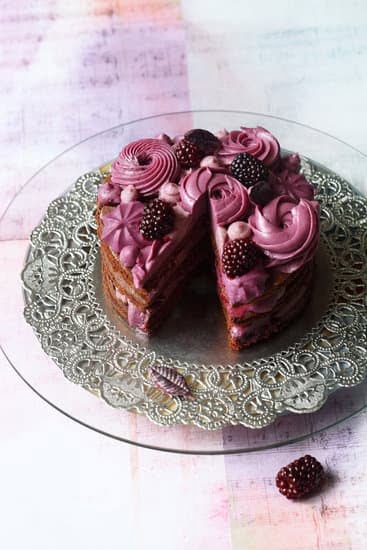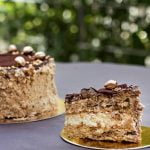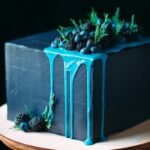Cake decoration has come a long way from traditional icing and frosting techniques. Nowadays, incorporating fresh fruits into cake designs has become increasingly popular, adding a vibrant and natural touch to your confectionery masterpieces. In this article, we will explore the art of decorating a cake with fruits, from selecting the perfect base to adding the final glaze for a glossy finish. Discover the beauty and creativity that fruit decorations can bring to your cakes.
When it comes to choosing a cake base for fruit decorations, there are essential tips and tricks to keep in mind. From the texture to the flavor profile, finding the right cake that complements your chosen fruits is crucial in achieving a harmonious balance. We will delve into these considerations to guide you in creating the perfect canvas for your fruit masterpiece.
Selecting the right fruits is another important aspect of fruit decoration on cakes. Color coordination and flavor pairings play an integral role in ensuring that the overall aesthetic is visually appealing and taste bud satisfying. With our guidance, you will learn how to make informed decisions when it comes to selecting fruits that complement each other while enhancing your cake’s overall appeal.
Get ready to dive deep into the exciting world of fruit decorations on cakes. From cleaning and cutting techniques for preserving freshness to creative patterns and designs for arranging fruits on top, we have got you covered. Furthermore, we will explore how additional elements like edible flowers or mint leaves can enhance the overall look even further.
Stay tuned as we walk you through each step of this fruity journey, including techniques for optimal fruit placement and adhesion. We will also discuss how applying a glaze or gel can provide a glossy finish that truly brings out the beauty of your fruit decorations. Finally, we’ll share tips on how to maintain longevity and keep those fresh fruit decorations looking their best for longer periods.
Whether you are an amateur baker or an experienced pastry chef, this article will provide valuable insights into decorating cakes with fruits. Get ready to showcase your culinary artistry with breathtaking fruit-dressed creations that are sure to impress.
From photography tips for capturing the perfect shot to presentation tips for sharing your work on social media, we have all the information you need to take your cake decorating skills to the next level. Stay tuned, and let’s get started on this deliciously fruity journey together.
Choosing the Perfect Cake Base
When it comes to decorating a cake with fruits, choosing the right cake base is essential. The texture and flavor of the cake will not only complement the fruits but also provide a stable foundation for your decorative masterpiece. Here are some tips and tricks to help you select the perfect cake base:
- Consider the Flavor: Think about how the flavors of the cake and fruits will work together. For example, if you plan to use tart berries as your fruit decorations, a vanilla or lemon-flavored cake would be a great choice. On the other hand, if you’re using sweet tropical fruits like mango or pineapple, consider pairing them with a coconut or passionfruit-flavored cake.
- Texture Matters: The texture of your cake base can impact both the taste and presentation of your fruit decorations. A light and fluffy sponge cake works well with delicate fruits like raspberries or strawberries, as it won’t overpower their flavors. Alternatively, a dense pound cake provides a sturdy base that can support heavier fruits like peaches or kiwis without compromising on taste.
- Opt for Moisture: Fruits can release juices while decorating a cake, so it’s important to choose a moist cake that can withstand this moisture without becoming soggy. You might want to avoid dry cakes such as angel food or chiffon cakes in favor of moist options like butter cakes or carrot cakes.
To enhance the overall aesthetic appeal of your fruit decoration, consider experimenting with different shapes and sizes for your cake base such as round, square, or even bundt cakes. Ultimately, finding the perfect balance between flavor, texture, and moisture will ensure that your fruit decorations shine on top of an excellent cake base.
- Consider the Flavor
- Texture Matters
- Opt for Moisture
Selecting the Right Fruits
Selecting the right fruits for decorating a cake is crucial for achieving both visual appeal and harmonious flavor combinations. When it comes to fruit decorations, color coordination and flavor pairings play a significant role in creating an eye-catching and delicious cake.
When choosing fruits for decoration, consider the overall color scheme of the cake. Select fruits that complement or contrast with the base color of the cake to create an aesthetically pleasing presentation.
For example, if you have a cake with a light-colored base such as vanilla or white, vibrant and colorful fruits like strawberries, blueberries, or kiwis can add a pop of color. On the other hand, if your cake has a rich chocolate base, lighter colored fruits such as raspberries or sliced bananas can provide an appealing contrast.
In addition to color coordination, it is important to consider flavor pairings when selecting fruits for decoration. The flavors of the fruits should complement or enhance the flavors of the cake itself. For instance, pairing citrusy flavors like orange slices with lemon-flavored cakes can create a refreshing combination. Similarly, berries like blueberries or blackberries can add tanginess to cakes with creamy frosting.
| Fruit Color | Flavor Pairings |
|---|---|
| Red (strawberries) | Vanilla |
| Yellow (bananas/mangoes) | Chocolate |
| Purple (blackberries/blueberries) | Lemon |
| Orange (mandarins/oranges) | Coconut |
Remember, selecting the right fruits involves not only considering their colors but also the flavors they bring to a cake. By understanding how different fruits can complement each other and the cake itself, you can ensure that your fruit decorations not only look visually appealing but also taste delicious.
Preparing the Fruits
One of the most important steps in decorating a cake with fruits is properly preparing the fruits. This includes cleaning, cutting, and preserving their freshness to ensure not only a beautiful presentation but also safe consumption. Here are some tips on how to properly prepare the fruits for cake decoration:
- Cleaning: Before using any fruit for decoration, it is essential to clean them thoroughly to remove any dirt, pesticides, or wax. Start by rinsing the fruits under cold running water and gently scrubbing them with a soft brush or your fingers.
For firmer fruits like apples, pears, or melons, you can also use a mixture of water and vinegar or lemon juice to remove any residue. Once cleaned, pat dry the fruits with a clean towel before proceeding to the next step. - Cutting: The way you cut the fruits can greatly influence the final look of your cake decorations. Aim for uniformity in size and shape so that they are easier to arrange on top of the cake.
Some popular ways to cut fruits for cake decoration include slicing them into thin rounds, creating fan shapes by making multiple cuts around the fruit’s circumference but leaving the bottom intact, or even carving intricate designs for more advanced decorators. - Preserving Freshness: Fruits are perishable items that can quickly lose their freshness if not handled properly. To keep your fruit decorations looking fresh and vibrant for longer periods, there are several techniques you can try. One common method is brushing lemon juice on cut surfaces to prevent browning due to oxidization.
Another option is dipping delicate fruits like strawberries or raspberries in a mixture of water and sugar syrup before placing them on the cake. Additionally, storing your prepared fruit decorations in an airtight container in the refrigerator until ready to use can help extend their shelf life.
By following these tips for preparing fruits for cake decoration, you can ensure that your creations not only look visually appealing but also taste delicious. Taking the time to properly clean, cut, and preserve the freshness of the fruits will result in a cake that both pleases the eye and delights the palate.
Arranging the Fruits
Arranging the fruits on a cake not only adds visual appeal but also allows for creativity and personal expression. The way in which the fruits are arranged can greatly contribute to the overall design and aesthetic of the cake. Here are some tips and ideas for creating beautiful and unique patterns with fruits:
- Symmetrical Designs: One classic approach to arranging fruits on a cake is by creating symmetrical patterns. This involves placing similar fruits or fruit slices equidistantly around the cake, creating a balanced and pleasing arrangement. For example, you can place strawberry slices in a circular pattern on top of the cake, or line up raspberries along the edges.
- Ombre Effect: Another popular technique is to create an ombre effect using different colored fruits. Start with one type of fruit at the bottom, such as blueberries, and gradually transition into another fruit like kiwi slices or orange segments as you move upward. This creates a visually striking gradient that adds depth to the cake’s appearance.
- Geometric Patterns: For those who enjoy a more modern and abstract look, consider arranging the fruits in geometric shapes or patterns. Use various types of fruits to create squares, triangles, or even intricate designs like chevron or herringbone patterns. Playing with different colors and textures can add even more visual interest.
| Arrangement Type | Description | Example |
|---|---|---|
| Symmetrical Design | Fruits placed equidistantly around the cake | Strawberry slices arranged in circles |
| Ombre Effect | Transitioning colors from one fruit to another | Blueberries turning into kiwi slices |
| Geometric Patterns | Abstract designs using various fruits | Squares created with mango and raspberry slices |
Remember, the arrangement of fruits on a cake is an opportunity to showcase your personal style and creativity. Experiment with different patterns, shapes, and colors to create a visually stunning masterpiece that will delight both the eyes and the taste buds.
Enhancing the Look
Choosing Edible Flowers
When it comes to enhancing the look of your fruit decorations on a cake, edible flowers can be an exquisite addition. Not only do they provide a burst of color and freshness, but they also add a delicate touch that can elevate the overall aesthetic appeal. However, it is important to choose the right edible flowers to ensure both safety and visual appeal.
First and foremost, make sure that the flowers you select are indeed edible. Some common options include pansies, violets, marigolds, roses, and lavender. It is crucial to avoid using any flowers that have been treated with pesticides or other chemicals. If you are unsure about the safety of a particular flower variety, it is best to consult with local experts or reputable sources before using them as cake decorations.
Incorporating Mint Leaves
Mint leaves are another fantastic element for enhancing the look of your cake with fruits. Not only do they add an appealing pop of green color, but their refreshing flavor can complement a wide range of fruit flavors. Whether you opt for spearmint or peppermint varieties depends on personal preference and what pairs best with the fruits used on your cake.
To incorporate mint leaves into your cake decoration, first ensure that you are using fresh ones. Additionally, gently wash and pat dry each leaf before adding them to the cake to remove any dirt or debris. Consider using whole leaves as accents around the base of the cake or tear off smaller pieces and scatter them over the top for a more casual arrangement.
Creating Harmonious Combinations
When adding edible flowers or mint leaves to your fruit-decorated cake, it is essential to consider how these additional elements will interact with both the fruits themselves and other decorations already in place. Aim for harmonious combinations where colors and flavors complement one another rather than create overwhelming contrasts.
For example, if your cake features a vibrant array of berries and citrus fruits, consider opting for delicate pastel-colored flowers like pansies or violets. These softer hues will create a visually appealing balance with the bold fruit colors. Similarly, if you have used tropical fruits such as pineapple and mango, mint leaves can add a refreshing touch that complements their natural sweetness.
By carefully selecting edible flowers and mint leaves and considering how they interact with your chosen fruits, you can enhance the overall look of your cake decoration and create an eye-catching centerpiece that is sure to impress.
Applying the Fruits
Once you have selected the perfect fruits and prepared them, it’s time to apply them to your cake. Fruit placement and adhesion play a crucial role in creating an aesthetically pleasing design that stays intact throughout the serving process. Here are some techniques and tips to consider when applying fruits to your cake.
Working with Berry Fruits
Berries like strawberries, blueberries, or raspberries can be used whole or cut in half depending on their size. To create a more vibrant look, gently press the berries into the frosting or cream filling. This will help them adhere better and prevent them from sliding off the cake when sliced.
Slicing Larger Fruits
For larger fruits such as peaches, kiwis, or pineapples, it is recommended to slice them into thin, even pieces. This ensures that each slice of cake gets an equal amount of fruit topping and allows for easier consumption. When placing these slices on top of the cake, gently press them into the frosting or cream filling to secure them in place.
Creating Fruit Flowers
To add an artistic touch to your cake decoration, consider creating fruit flowers using thinly sliced fruits like oranges or lemons. Stack the slices on top of each other in circular patterns starting from the center and working your way outwards. Secure each layer with toothpicks if needed for stability.
Using Toothpicks for Delicate Placement
For delicate fruits like grapes or cherries that may easily roll off the cake surface, toothpicks can be your best friend. Simply insert a toothpick into each fruit and then stick it securely into the frosting or cream filling on top of the cake. Be mindful of removing these toothpicks before serving to avoid any accidents.
Edging the Cake with Fruits
Another technique for fruit placement is to create a border of fruits around the edge of the cake. Sliced strawberries or kiwi can be arranged in an overlapping pattern, while smaller fruits like blueberries or cherries can be placed in a straight line. This not only adds visual appeal but also ensures that each slice of cake gets a taste of the fruity goodness.
Remember, as you place the fruits, leave some spaces between them to allow the beauty of the cake to show through. Also, it’s essential to consider the weight and texture of each fruit when placing them on your cake. Softer fruits may need more delicate handling, while firmer ones can withstand slightly firmer pressure against the frosting or cream filling.
By following these techniques for fruit placement and adhesion, you can create a visually stunning cake that stays intact until it’s time to serve and impress your guests with both its appearance and taste.
The Final Touch
Adding a glaze or gel to your fruit-decorated cake is the final step that will give it a stunning glossy finish. Not only does it enhance the overall look of the cake, but it also helps to seal in the freshness of the fruits and preserve their vibrant colors. There are a variety of glazes and gels that can be used, each offering its own unique characteristics.
One popular option for adding a glossy finish is a fruit glaze. Fruit glazes are typically made by combining fruit juice or puree with sugar and cornstarch to create a thick, shiny coating. This is not only visually appealing but also adds an extra layer of flavor to your cake. Depending on the type of fruit you are using for decoration, you can choose a complementary fruit glaze that will enhance the taste and appearance of the cake.
Another option for achieving a glossy finish is using gelatin. Gelatin gives cakes a smooth and glassy appearance while also helping to hold the fruits in place. To use gelatin as a glaze, dissolve it in water according to package instructions, then brush it onto the surface of your cake once cooled slightly. The gelatin will harden as it cools further, creating a shiny coating that will make your fruit decorations pop.
It’s important to note that when applying glaze or gel to your cake, do so sparingly. You want to lightly coat the fruits without smothering them completely, as this may detract from their natural beauty. Take your time when applying the glaze or gel, using a pastry brush or spoon to carefully drizzle it over the fruits and spread it out evenly across the surface of the cake.
Adding a glaze or gel for a glossy finish is truly the icing on top when decorating a cake with fruits. It adds that final touch of elegance and sophistication while preserving both the visual appeal and taste of your creation. Experiment with different types of glazes and gels to find the one that suits your personal preferences and complements the fruits you have chosen.
Tips for Longevity
One of the key challenges when decorating a cake with fruits is ensuring that the fruit decorations stay fresh for as long as possible. After all, nobody wants their beautifully decorated cake to start wilting or spoiling shortly after it has been made. Luckily, there are several tips and tricks you can follow to help prolong the freshness of your fruit decorations.
Firstly, it is important to choose fruits that are at their peak ripeness. Overripe or underripe fruits may not last as long and could spoil faster. Look for fruits that are firm but ripe, with vibrant colors and a pleasant aroma. Additionally, opt for fruits that have a longer shelf life, such as berries, citrus fruits, and melons.
Once you have selected your fruits, proper storage is crucial for maintaining their freshness. Refrigerating the decorated cake is usually necessary to keep the fruits cool and prevent them from spoiling quickly. However, certain fruits like bananas and pineapples should be added to the cake just before serving as they tend to brown or become mushy when refrigerated.
Another useful tip is to apply a thin layer of glaze or gel over the fruit decorations. This will help seal in moisture and preserve the freshness of the fruits. You can use simple syrup, honey, or even clear jelly as a glaze. Lightly brush it over the fruit surfaces using a pastry brush to add shine while keeping them hydrated.
By following these tips for longevity, you can ensure that your fruit decorations remain fresh and visually appealing on your cake for an extended period of time. Not only will this enhance the appearance of your creation, but it will also allow you to enjoy your delicious masterpiece for longer without worrying about spoilage or wilting fruit.
Showcasing Your Culinary Artistry
Social media has become a powerful platform for individuals to showcase their culinary creations, and when it comes to decorated cakes with fruits, a visually appealing photograph can truly take your artistry to the next level. In this section, we will provide you with some photography and presentation tips to help you showcase your cake decorations on social media.
Firstly, lighting is crucial when taking food photographs. Natural light is always the best option as it brings out the vibrant colors of the fruits and creates more depth in your imagery. Try positioning your cake near a window or outdoors during daytime to maximize the natural light. If this isn’t possible, invest in some good quality artificial lighting that mimics daylight.
In addition to proper lighting, composition plays a vital role in creating an eye-catching photograph. Experiment with different angles and perspectives to find the most visually appealing shot. Consider using the rule of thirds – dividing your frame into three equal sections both vertically and horizontally – and place your cake at one of the intersecting points. This allows for an interesting composition that draws the viewer’s attention.
Furthermore, pay attention to the background and props you choose to include in your photograph. A cluttered or distracting background can detract from the main subject, so opt for a clean and simple backdrop that complements the colors of your fruit decorations. Additionally, consider using complementary props such as cake stands, plates, or utensils that enhance the overall aesthetic.
Lastly, don’t forget about post-processing. Editing your photographs can really make them pop and add that extra polish. Use photo editing software or apps to adjust brightness, contrast, saturation, and sharpening as needed. Be cautious not to over-edit though; aim for a natural look that accurately represents your beautiful cake.
By implementing these photography and presentation tips on social media platforms like Instagram or Pinterest, you can effectively showcase your culinary artistry through stunning images of fruit-decorated cakes. Remember: capturing mouthwatering images requires practice and experimentation, so don’t be afraid to try new techniques and find your unique style. Happy decorating.
Frequently Asked Questions
How do you put fruit on a cake top?
To put fruit on a cake top, there are a few simple steps you can follow. First, make sure the cake is cooled completely before placing any fruit on it. This will prevent the fruit from sinking into the cake or becoming mushy due to residual heat. Next, choose your desired fruits and wash them thoroughly. It’s important to pat them dry with a paper towel to remove excess moisture that could affect the cake’s texture.
Once dry, arrange the fruit on top of the cake in a visually appealing manner. You can place them individually or create patterns depending on your preference. For stability, it’s advisable to use smaller slices or pieces of fruit rather than large chunks that may weigh down the cake. The fruits can be placed directly on the frosting or glaze of the cake, but if you want extra security, you can also attach them by lightly brushing some warmed apricot jelly or melted jam over each piece.
How far in advance can I put fresh fruit on a cake?
Fresh fruit is best when consumed as soon as possible for optimal flavor and appearance, but there are still ways to plan ahead if you want to put fresh fruit on a cake in advance. Generally speaking, it is recommended to put fresh fruit on a cake no more than 24 hours before serving.
Beyond this timeframe, depending on the type of fruit used and its freshness at the time of placement, there might be an increased risk of texture changes such as wilting or browning occurring due to exposure to air and moisture from the frosting or glaze on the cake. In order to retain freshness for as long as possible, store the decorated cake in a cool place away from direct sunlight.
Can you decorate a cake with fruit the day before?
Yes, you can definitely decorate a cake with fruit the day before serving! In fact, decorating a cake with fresh fruit the day before can offer several advantages. By decorating in advance and giving time for any juices released by the fruits to be absorbed by the surrounding frosting or glaze, you can enhance the flavors and moistness of the cake. Additionally, pre-decorating allows for better time management if you have a busy schedule on the day of serving.
However, there are certain factors to consider to ensure the best quality of your decorated cake. To prevent any textural changes or browning, opt for fruits that hold up well and aren’t prone to rapid deterioration, such as berries or citrus slices. Also, store the cake properly by covering it loosely with plastic wrap or placing it in an airtight container in the refrigerator until ready to serve. Before presenting it to your guests, give it a final touch-up if needed and let it come to room temperature for about 30 minutes before serving to maximize flavor and texture.

Welcome to our cake decorating blog! My name is Destiny Flores, and I am the proud owner of a cake decorating business named Cake Karma. Our mission is to provide delicious, beautiful cakes for all occasions. We specialize in creating custom cakes that are tailored specifically to each customer’s individual needs and tastes.





